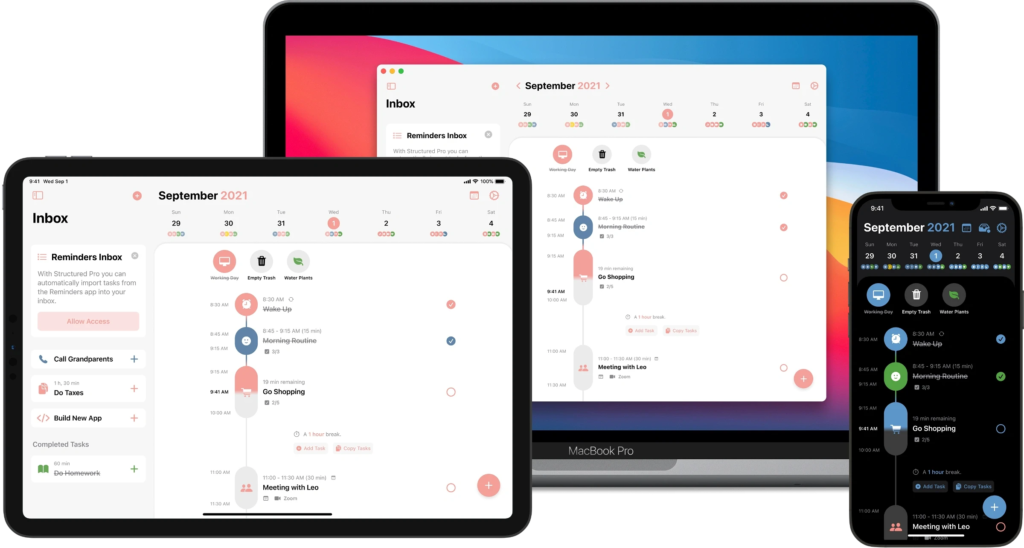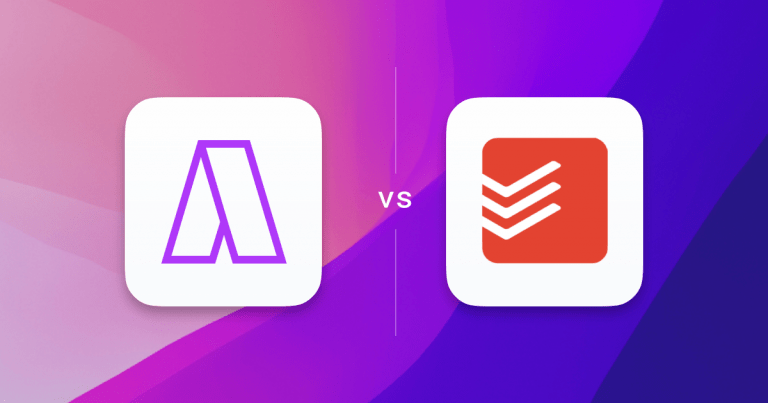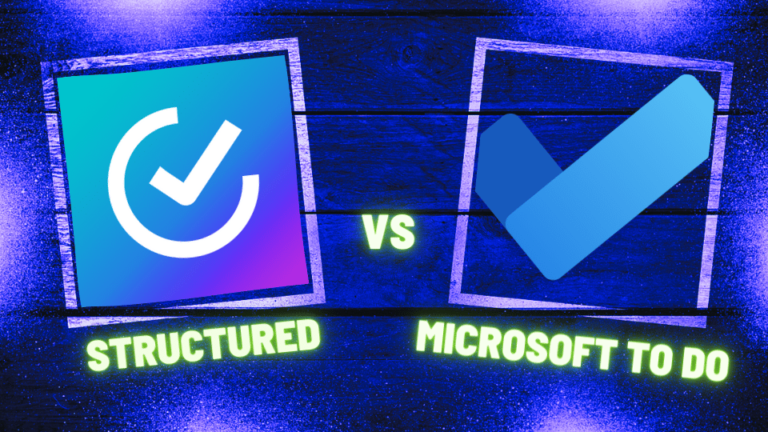What is Microsoft To Do
Microsoft To-Do is a streamlined and user-friendly task management application that integrates seamlessly with the Microsoft ecosystem. Designed to enhance productivity for both individual and professional use, MS To-Do stands out with its simple yet effective interface. It allows users to create lists, set reminders, and track tasks across various devices, ensuring accessibility and convenience. The app’s integration with Microsoft services like Outlook makes it a natural choice for users already embedded in the Microsoft environment. MS To-Do’s focus on simplicity and integration caters to those who need a straightforward, no-frills approach to task management while benefiting from the robustness of Microsoft’s technology.
Key Features of Microsoft To Do
- Task Addition: Easily add tasks and organize them in custom lists.
- Task Details: Add due dates, reminders, and files to tasks.
- Task Prioritization: Mark tasks as important for better focus.
- List Sharing and Collaboration: Share lists with others and assign tasks.
- Integration with Microsoft Tools: Seamlessly works with Outlook, Cortana, and other Microsoft applications.
- Customizable Themes and Backgrounds: Personalize the app with various themes and backgrounds for a unique user experience.
What is Structured
Structured is a web-based daily planner application designed to enhance productivity and task management. It offers features like customizable task management, time tracking, goal setting, and progress tracking. The app is accessible across multiple platforms and integrates with other productivity tools. It’s suitable for individuals and teams aiming to efficiently manage tasks and projects. Structured’s user-friendly interface and cross-platform compatibility make it a comprehensive solution for daily and weekly planning.

Key Features of Structured
- Customizable Task Management: Structured allows users to tailor their task management experience. Users can set priorities, deadlines, and categorize tasks, enhancing organization and focus.
- Time Tracking: This feature helps users monitor how much time they spend on each task. It’s useful for productivity analysis and time management.
- Goal Setting: Users can set short-term and long-term goals, making it easier to track progress and stay motivated.
- Progress Tracking: Structured provides visual tools for tracking task and project progress, offering insights into productivity and areas for improvement.
- Cross-Platform Accessibility: The app is accessible across various devices, ensuring seamless task management and planning regardless of the user’s location or device.
- Integration with Other Tools: Structured integrates with other productivity tools, streamlining workflows and enhancing overall efficiency
Microsoft To Do vs Structured: Features
| Features | Microsoft To Do | Structured |
|---|---|---|
| Integrations | Microsoft Products such as Outlook, allows external apps to connect with their API | Apple Calendar, Google Calendar, Outlook, Microsoft Exchange, Yahoo Calendar, and AOL Calendar |
| Calendar | Not Inbuilt | Yes |
| Platforms | Windows, macOS, iOS, Android, and as a web and desktop app. | macOS, iOS, Android |
| Task Management | To-do lists, Task priorities, Subtasks, and color-coding items for organization. | Task editing and creation, labels, tags, progress, prioriy and recurring tasks |
| Natural Language Processing | Yes | No |
| Time Blocking | No | Yes |
| Analytics | No | No |
| Meeting Scheduler | No | No |
| Time Zones | Yes | No |
| Reminders | Yes | Yes |
| Customer Support | Average | |
| 1:1 User Onboarding | No | No |
| Pricing | Free | A monthly subscription for $2.99, a yearly subscription for $9.99, and a lifetime subscription for $29.99, each providing full access to the app’s features. |
Microsoft To Do vs Structured: Pricing
Microsoft To Do Pricing
MS To do is absolutely free.
Structured Pricing
Structured offers three pricing plans:
(i) Monthly Subscription: $2.99
(ii) Yearly Subscription: $9.99
(iii) Lifetime Subscription: $29.99
All these subscriptions provide access to the same features and unlimited use of the app, the free version of Structured allows basic planning and organization, but upgrading to one of these plans unlocks additional features
Microsoft To Do vs Structured: Reviews
Microsoft To Do Review
Microsoft To Do, with its cloud-based task management, offers a range of benefits. The app allows for effective organization and prioritization of tasks and integrates well with other Microsoft services. Users appreciate the ability to customize lists and set recurring tasks. However, some limitations include the lack of rich text formatting for hyperlinks, inability to import task lists directly into Excel, and restrictions in copying tasks between lists. Despite these cons, the biggest advantage of Microsoft To Do is that it’s completely free to use.
Structured Review
Structured is a user-friendly daily planner app praised for its ability to integrate tasks with calendar entries, offering a streamlined approach to time management. Its simple interface and visual timeline are particularly appreciated, making it easy to organize and view daily activities. However, some users might find its features limited compared to more comprehensive productivity tools. Additionally, the absence of certain functionalities like natural language processing and advanced task analytics may be a drawback for users seeking more sophisticated planning capabilities.
Which One Should You Pick
Consider Microsoft To Do if
- You’re in the Microsoft Ecosystem: It integrates well with Office 365 services, but might not be the best standalone option for those not using other Microsoft products.
- You Value Simplicity in Task Management: While it’s easy to use for basic task lists and reminders, it may lack advanced features found in more comphensive task managers.
- You Prefer Free Tools: Microsoft To Do is free, making it accessible, but it might not offer the depth of paid apps in terms of features and customization.
Consider Structured if
- You Want a Visual Daily Planner: Structured is a good choice for those who prefer a visual representation of their tasks and calendar events, offering a clear, timeline-based view of daily activities.
- You Need Basic Task Management: If your requirements are centered around basic task organization without the need for advanced analytics or extensive features, Structured meets these needs effectively.
- You Prefer a Simplistic Interface: For users seeking an app with a straightforward, user-friendly interface, Structured’s minimalist design can be appealing, though it might lack the complexity desired by power users.
Best Microsoft To Do and Structured Alternatives
- Akiflow: Akiflow is a time management app offering time blocking, task scheduling, and integrations with various tools. It focuses on productivity and organization through a unified task and appointment interface.
Akiflow Price: $19 per month, paid annually - Google Tasks: Google Tasks is a task management app, allowing users to create, manage, and prioritize tasks directly from their smartphone.This app is particularly useful for those already embedded in the Google ecosystem, providing a synchronized task management experience across devices.
Google Tasks Price: Free - TickTick: TickTick is an all-in-one task management and reminder app, offering features like task organization, habit tracking, and calendar views. It’s designed for personal and work use, facilitating productivity with its user-friendly interface and cross-platform compatibility. TickTick also includes collaboration tools for team projects.
TickTick Price: $3 per month, paid annually

Best Time Blocking Web and Desktop Apps, 2024
Explore the best time blocking apps of 2024! Discover how Akiflow, TickTick, Usemotion, Sunsama, Sortedapp, and TimeHero revolutionize productivity, offering unique features for professionals and students to manage tasks and enhance efficiency.

Improve Focus: 5 ADHD Productivity Tools & Calendar Apps for 2023
Discover five of the best apps and tools for those with ADHD, from note-taking apps to time-blocking platforms. Get ready to stay organised, motivated and on track with Akiflow’s essential guide.

The Top 3 Todoist Alternatives (In-Depth Review)
Over 25 million people now use Todoist to stay on track and plan their day. It has expanded rapidly and is now a widely used task manager with seamless integrations into other task and calendar managers like Akiflow. While Todoist is hugely popular among its wide user base, there are now a variety of Todoist […]

